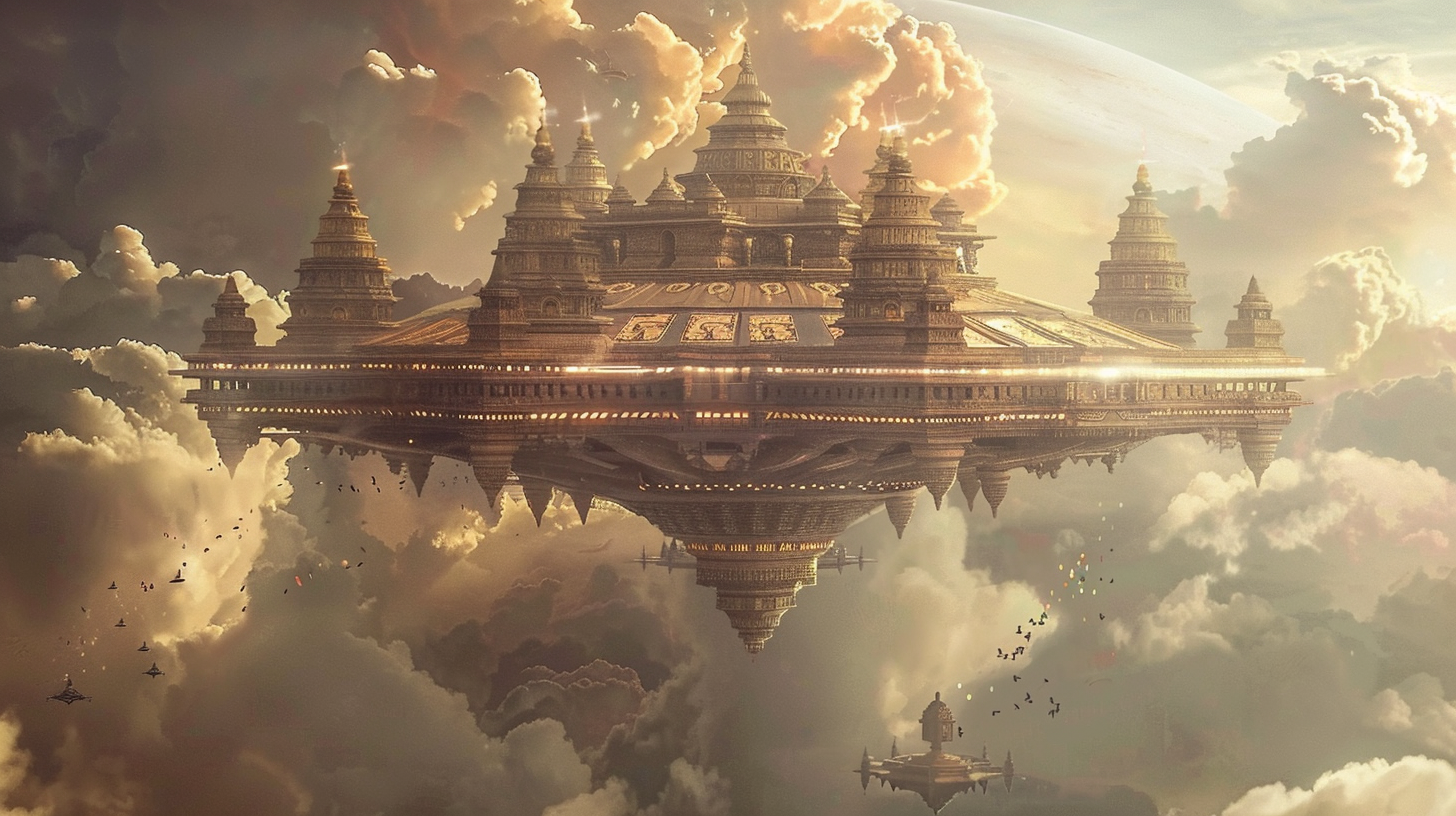In various epochs, the tale of Pushpaka Vimana, a remarkable flying residence narrated in ancient scriptures, has mesmerized minds. Portrayed as an opulent airborne chariot gliding through the heavens, its association with present-day UFO sightings raises intriguing inquiries about ancient advancements and potential encounters with extraterrestrial entities.
Deeply rooted in Hindu mythology, Pushpaka Vimana is intricately intertwined with the grand narrative of Ramayana, presenting it as the celestial transport of the demon monarch Ravana. Purportedly designed by the divine architect Vishwakarma, this magnificent flying mansion is described as a spectacle of unparalleled grandeur and opulence, adorned with elaborate motifs and valuable gemstones.
What sets Pushpaka Vimana apart is its uncanny resemblance to contemporary portrayals of UFOs. Observers of UFO occurrences frequently describe similar attributes – a round craft capable of hovering and swift maneuvers, occasionally accompanied by strange lights and otherworldly manifestations.

The similarities between Pushpaka Vimana and present-day UFO sightings have sparked speculations about the genesis of such phenomena. Could it be plausible that ancient civilizations possessed knowledge of advanced aerial technologies, perhaps engaging with beings from distant star systems? Or does this narrative merely signify philosophical musings on spiritual convictions and cosmic occurrences?
One hypothesis proposes that Pushpaka Vimana might have been influenced by authentic encounters with sophisticated machinery. Proponents of this idea underscore the likeness between the descriptions of Pushpaka Vimana and accounts of flying apparatus discovered in numerous ancient cultures globally, suggesting a potential shared cultural consciousness of extraterrestrial interactions.
Contrarily, another viewpoint suggests that Pushpaka Vimana could symbolize humanity’s innate quest for progress and discovery. From this standpoint, the legend of Pushpaka Vimana symbolically encapsulates human aspirations for enlightenment and wisdom, transcending terrestrial confines and aspiring towards celestial domains.
Whether interpreted as a historical testament of advanced technologies or a figurative representation of human aspirations, the saga of Pushpaka Vimana perseveres as a wellspring of captivation and inspiration. It incites contemplation on the mysteries of the universe and our standing within it, prompting reflections on the limitless possibilities awaiting those daring enough to imagine and traverse into uncharted territories.
